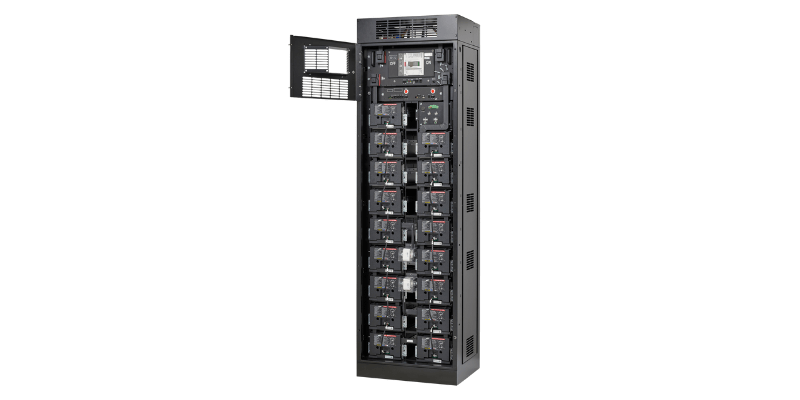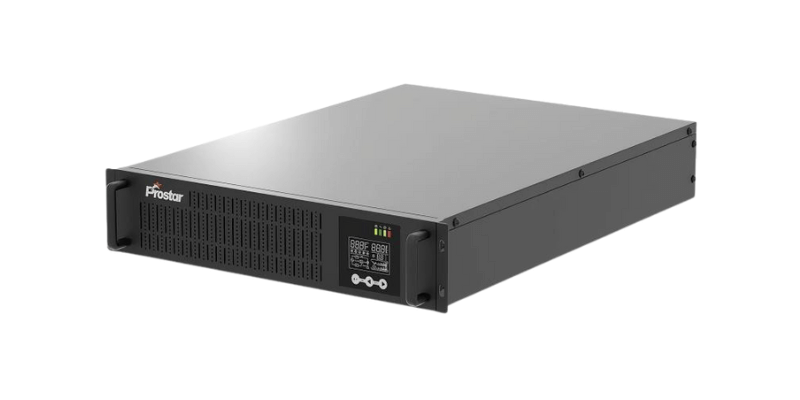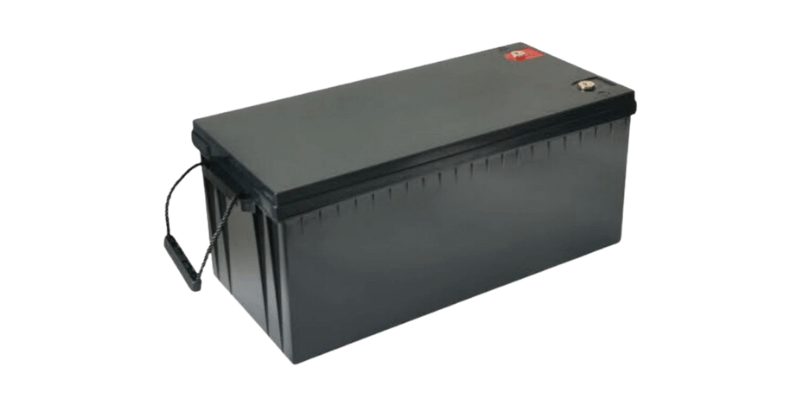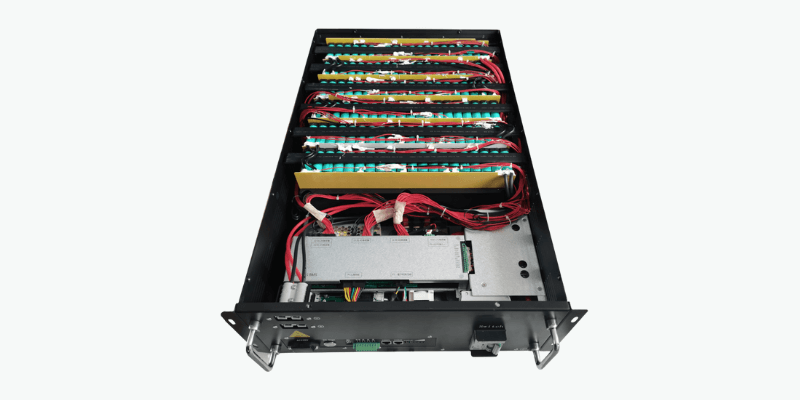Uma bateria da UPS (fonte de alimentação ininterrupta) é o componente chave de um sistema UPS, fornecendo energia de backup instantânea durante interrupções ou flutuações. Este artigo explora as baterias UPS, seu papel, diferenças de baterias regulares, vida útil, propósito, tipos e as melhores opções disponíveis.
Componentes do sistema UPS
Um UPS (fonte de alimentação ininterrupta) protege dispositivos conectados durante interrupções de energia e consiste em quatro componentes principais:
- Retificador: converte CA em CC para carregamento de bateria e energia do inversor.
- Bateria: armazena energia para uso durante interrupções.
- Inversor: converte DC da bateria de volta para CA, fornecendo energia limpa e estável.
- Switch de desvio estático: direciona automaticamente a energia da rede se o UPS falhar, garantindo a operação ininterrupta.

Funções da bateria da UPS
The UPS battery acts as the ”energy reservoir” within the UPS system. Its primary functions include:
- Backup Power Delivery: Instantly supplying electricity when mains power fails (typically within 2–20 milliseconds).
- Voltage Stabilization: Mitigating harmful fluctuations (e.g., spikes, dips) during normal operation.
- Critical System Protection: Preventing data loss in servers, downtime in medical devices, or hardware damage in industrial settings.

Difference Between UPS and Normal Battery
A UPS battery is part of a system providing uninterrupted power, while a normal battery simply stores energy.
| Aspect | UPS Battery | Normal Battery |
| Papel primário | Poder de backup instantâneo e condicionamento de energia | Independente armazenamento de energia |
| Foco de design | Otimizado para rajadas de alta potência e recarga rápida | Descarga constante e a longo prazo |
| Integração | Trabalha com inversores, retificadores e sistemas de monitoramento | Opera independentemente |
| Estabilidade de saída | Fornece energia CA limpa e regulamentada | Produz a potência CC bruta |
Tipos de baterias usadas para UPS
Os sistemas UPS usam vários tipos de bateria, cada um com suas próprias vantagens e desvantagens:
- Baterias de chumbo-ácido: tradicional e econômico, disponíveis como ácido de chumbo regulado por válvula (VRLA) ou variantes inundadas.
- Baterias de íons de lítio: cada vez mais popular para sua alta densidade de energia, vida útil mais longa, peso mais leve, tamanho compacto e menor manutenção em comparação com baterias de chumbo-ácido.
Quanto tempo dura as baterias UPS?
A vida útil de uma bateria da UPS depende de vários fatores:
Química da bateria
- Lead-ácido: 3-5 anos
- Ion de lítio: 5-10 anos
Fatores ambientais
Temperaturas acima de 25 ° C (77 ° F) aceleram a degradação; A faixa ideal é de 20 ° -25 ° C (68 ° –77 ° F).
Padrões de uso
Descargas profundas frequentes ou recarga de baixa redução reduzem a longevidade. As descargas parciais (capacidade de 40 a 80%) prolongam a vida útil.
Manutenção
Testes regulares (a cada 6 meses), limpeza de terminais e monitoramento de software otimizam o desempenho.

Baterias UPS de chumbo-ácido vs bateria de lítio UPS
A escolha entre as baterias UPS de íons de chumbo e íons de lítio depende das necessidades, prioridades e orçamento do usuário.
| Critérios | Baterias UPS de chumbo-ácido | Baterias de lítio UPS |
| Vida útil | 3-5 anos | 5-10 anos |
| Densidade de Energia | Inferior (mais volumoso/mais pesado) | Maior (compacto/leve) |
| Custo | Menor custo inicial | 2–3 × maior investimento inicial |
| Manutenção | Moderado (vrla) a alto (inundado) | Mínimo |
| Tolerância à temperatura | Desempenho de desempenho abaixo de 0 ° C ou acima de 25 ° C | Estável em -20 ° C a 60 ° C |
| Eco-impacto | Reciclável, mas contêm chumbo/ácido | Pegada de carbono inferior; reciclável |
Baterias de íon de lítio estão dominando os mercados da UPS, especialmente em data centers, telecomunicações e assistência médica, devido a custos decrescentes, avanços de segurança e a demanda por soluções sem manutenção e de alta densidade. No entanto, as baterias de chumbo-ácido ainda servem aplicações sensíveis ao orçamento ou de baixo ciclo.
Conclusão
As baterias da UPS são essenciais para a continuidade da energia, convertendo o armazenamento de energia em proteção inteligente de energia. Enquanto as baterias de chumbo-ácido proporcionam acessibilidade e confiabilidade, a tecnologia de íons de lítio oferece longevidade e eficiência superiores.
À medida que as demandas de infraestrutura aumentam e a sustentabilidade se torna uma prioridade, as baterias de lítio UPS devem se tornar o padrão para backup crítico de energia, garantindo que hospitais, data centers e tecnologias inteligentes permaneçam operacionais, independentemente das condições da grade.

